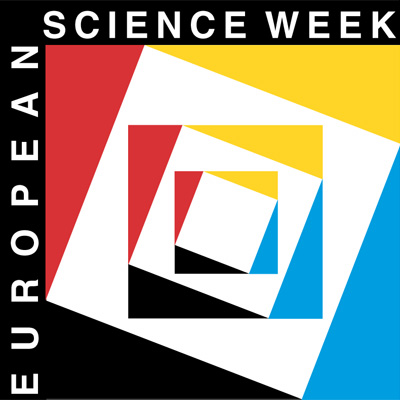

The Venus Transit 2004
... Brief InfoSheet C2
Printable Page: html
The Sun - our central star
|
Flares (left photo) in the solar atmosphere. On the right photo, an enormous prominence is visible in the lower left corner |
|
The Sun is the star nearest to us. It is a huge, luminous ball of gas like other stars in the Universe. It consists of several parts. Going outside in, they are:
- The corona (which means "crown") is the outer shell of the Sun's atmosphere. It is an extremely hot zone with temperatures reaching up to about 2 million degrees. Because the daytime sky near the Sun is simply too bright to see the surrounding corona, the latter can normally only be seen during a total solar eclipse or by using a a so-called coronograph.
- The chromosphere (which means "coloured sphere") is a transparent layer, just above the photosphere. It extends from a few hundred kilometers above the top of the photosphere and outwards to a height of about 2000 km where it merges with the corona. Over this distance, the temperature of the chromosphere increases from 4300 degrees to more than 400,000 degrees.
- The photosphere is the visible "surface" of the
Sun. The name means "sphere of light". From this thin layer -
which is only about 300 km deep - most of the Sun's energy
is emitted in the form of visible and infrared radiation.
The temperature in the photosphere decreases steadily from
about 6400 degrees at the base to about 4400 degrees at the top
where it merges with the chromosphere above.
The photosphere present several features, such as granulation caused by varying cells measuring about 1000 km in diameter, sunspots, faculae and filamentary structures, all associated with strong magnetic fields.
- Sunspots are dark areas in the Sun's photosphere, which are cooler than their surroundings. They generally appear in pairs or groups, and are associated with very strong magnetic fields. Spot sizes vary from "small" ones about 15,000 km across (that is, about the size of the Earth) to enormous groups spanning more than 150,000 km. The number of sunspots vary in a cycle lasting about 11 years.
- The solar atmosphere is a very active place. Large amounts of hot gas move around and the forms constantly change. Flares are brightenings on the surface that are connected to re-arrangement of the magnetic field with a burst of energy. Large clouds are sometimes lifted far above the photosphere and can then be seen as prominences.
- It is common to divide the Sun's interior into three distinct
zones:
- The uppermost is the Convective Zone. It extends downwards from the bottom of the photosphere to a depth of about 15% of the radius of the Sun. Here the energy is mainly transported upwards by (convection) streams of gas.
- The Radiative Zone is below the convection zone and extends downwards to the core. Here energy is transported outwards by radiation and not by convection. From the top of this zone to the bottom, the density increases 100 times.
- The core occupies the central region and its diameter is about 15% of that of the entire star. Here the energy is produced by fusion processes through which hydrogen nuclei are fused together to produce helium nuclei. The temperature is around 14 million degrees.
Want to know more?
This topic is discussed in a more detailed way in the associated Extended InfoSheet.
Back to the List of Brief InfoSheets.